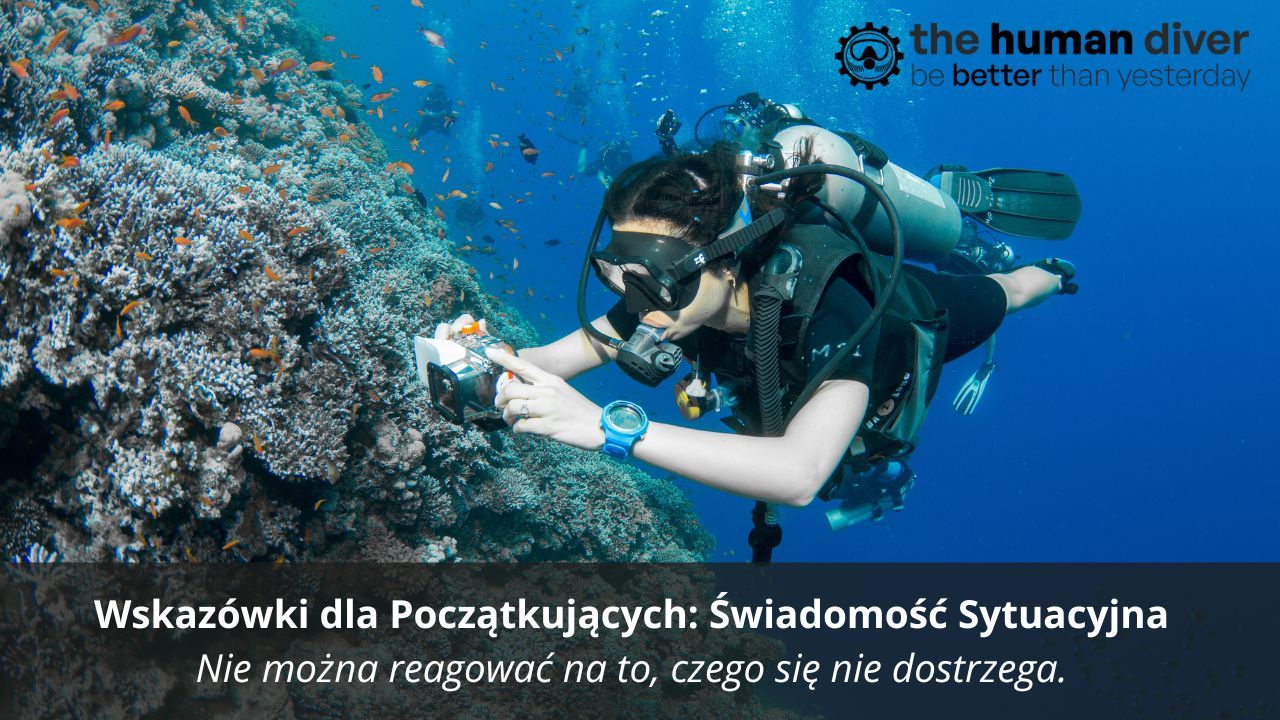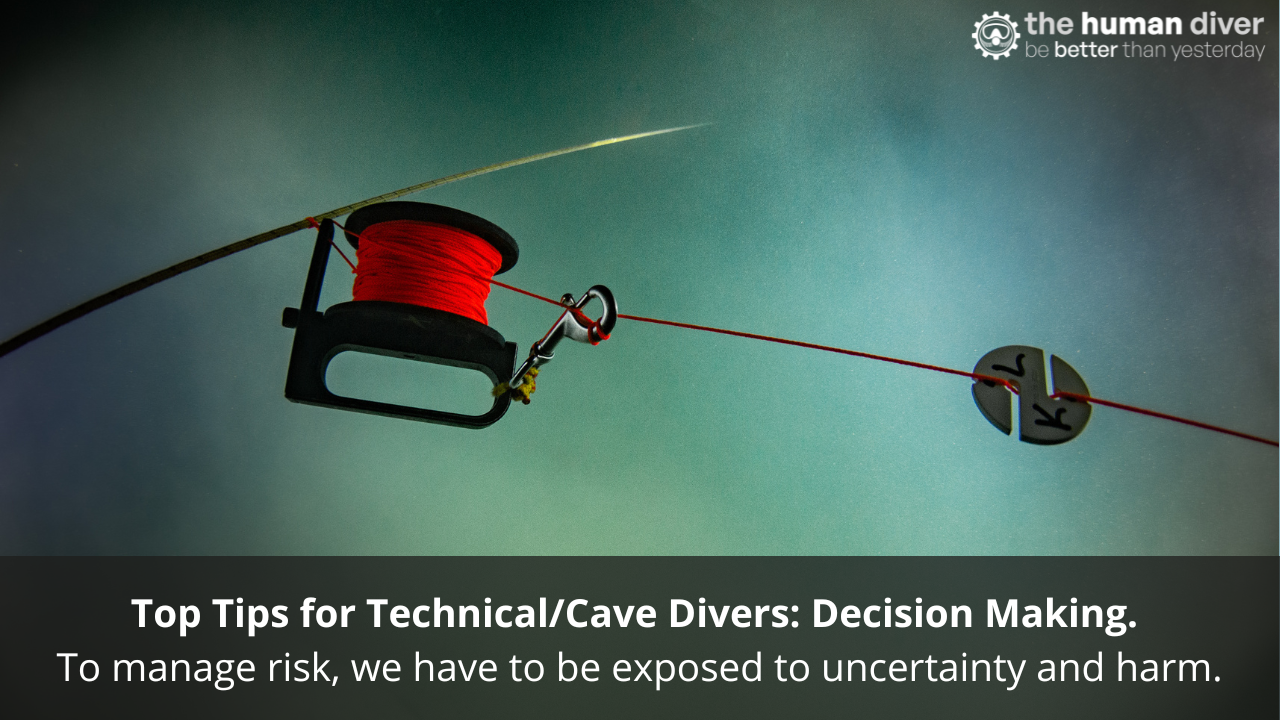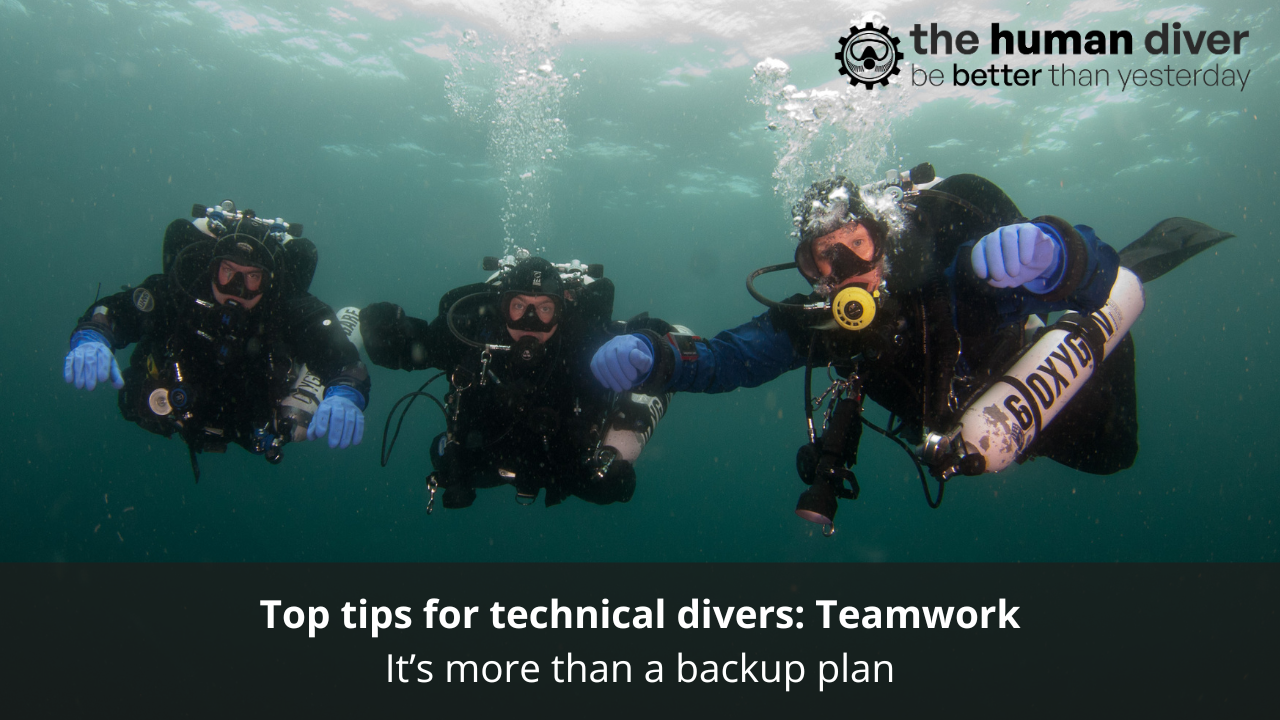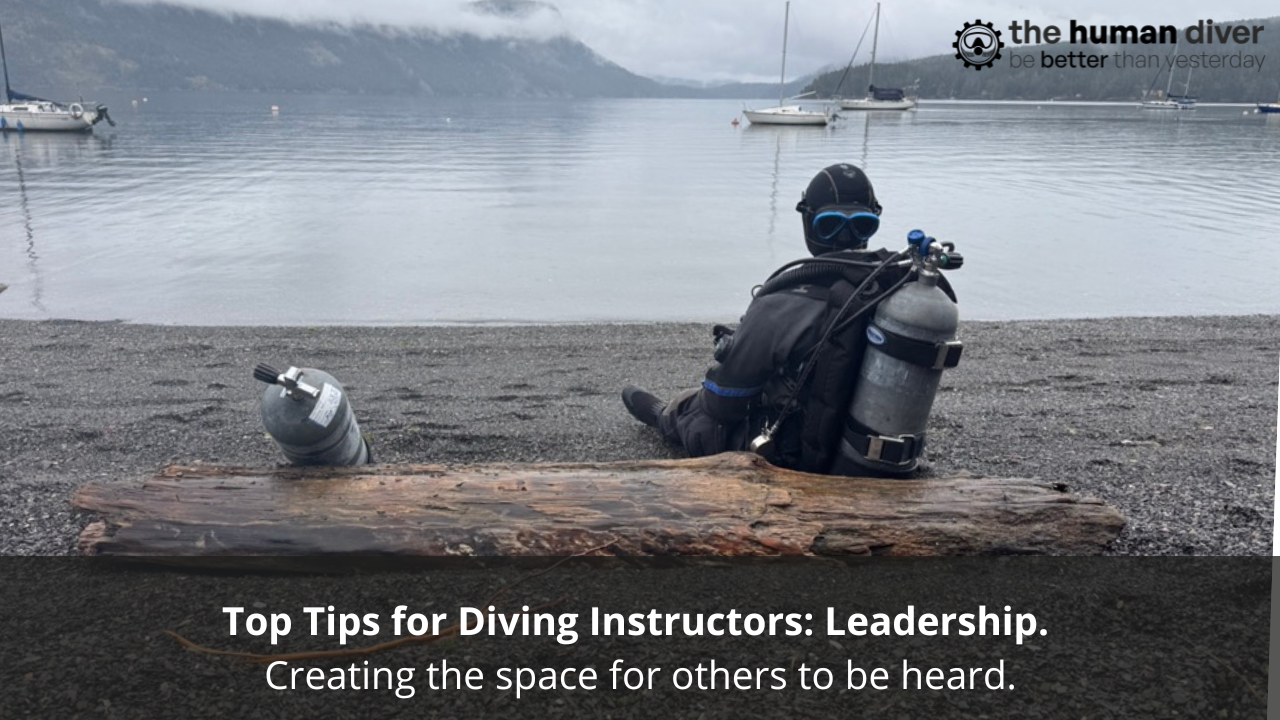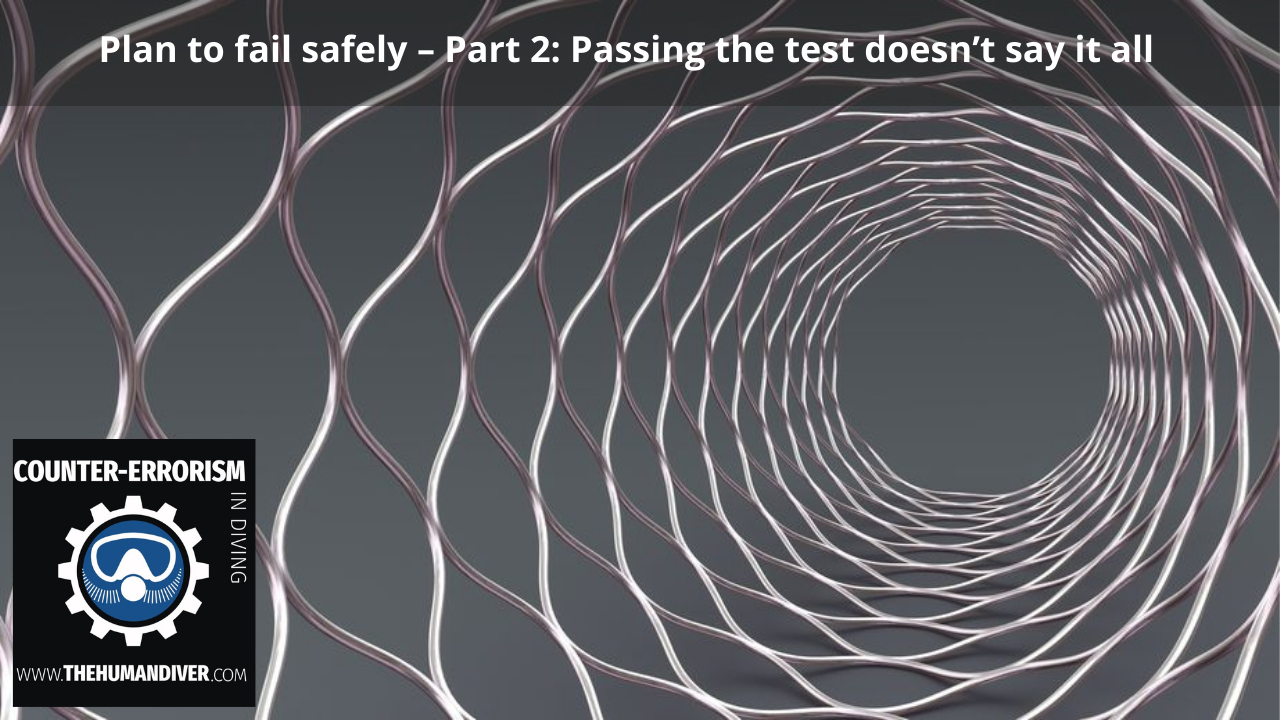
Plan to fail safely – Part 2: Passing the test doesn’t say it all
Dec 06, 2020Plan to fail safely: Part 2.1
Each year many divers undergo diving medical examinations. The purpose of this physical is to make sure you are actually fit to dive and to prevent health-related incidents or accidents.
In many countries as a diving professional, you have to have yourself tested every year to be allowed to teach. So, I’ve been having myself tested every year since 2001 and have never had any issues. All good, right? Or is it…?

I had my 50th birthday this year (2020) and I am generally speaking, in good health. I always pass my physicals, so I shouldn’t have a care in the world. But, somewhere in the back of my mind, I had this nagging voice. We’ve all heard this at one time or another. My little voice was reminding me that it was actually quite strange that I kept passing all my physicals because of my family’s medical history. My mother had several heart attacks, and my brother had a heart attack at the age of 38. Also, my grandparents on both sides of the family had cardio-vascular problems. And here I was, passing test after test. Was I this indestructible? Was I good, or was I lucky?
On 3 occasions during the last 3 or 4 years, I had felt an uncomfortable feeling in my chest, but it only lasted for about 5 minutes and it quickly went away with a bit of stretching. I had simply written it off as a pulled muscle because it had always been immediately after I had lifted something heavy. This is something we call confirmation bias: we will try to find information or a reason to support our thought process, based on previous experience. Denial also played a big part here. But still, here was this voice.

I found an app online that can be used to determine whether you should call for an ambulance straight away or whether it can wait until you can see your family doctor. You simply enter your signs and symptoms and the app tells you what to do. In my case, the app told me to call for an ambulance right away. Still, a bit of an exaggeration, right? I thought about it for a couple of hours and decided to make an appointment with my GP. It was a Sunday, so I had to schedule the appointment through the GP’s website and here again, I had to list my signs and symptoms. I did this and didn’t think anything of it. Until I was woken up very early the next morning by the GP’s assistant: “Mr Den Ouden, are you still experiencing these symptoms? You should have called for an ambulance straight away!”
I explained that the last time I had felt this uncomfortable feeling was already almost a month ago, but she wasn’t impressed. To put it mildly…
Later that day I spoke about my “little voice” with my GP and she agreed it couldn’t hurt to do some “preventative tests”. I was referred to a cardiologist and he signed me up for a series of tests. Lots of needles, tests and scans later he told me my little voice had been right: one of my coronary arteries was completed blocked, the other one was at least 50% blocked and the third one he couldn’t properly see on the CT scan. He referred me to another cardiologist at a different hospital for something called angioplasty and a stent. Basically, they run a wire up your artery and punch through the blockage. They then inflate a little balloon to stretch the artery a bit and they finish by putting in a stent. A stent is a small wire tube which should prevent the artery from collapsing.
I ended up with 4 stents and I was not allowed to dive for 3 months.
 Image: Cardiology Advisor
Image: Cardiology Advisor
As a diver and especially as a diving professional, being told you cannot dive for 3 months is no fun. But imagine the alternative? Sure, it’s possible that nothing would have happened. But it’s highly unlikely. Remember I had already had 3 “warnings”. My little voice prevented much worse. I would never have forgiven myself had something happened to me while (teaching) diving. I would not want to cause that sort of psychological trauma to anyone.
So here are some questions for you:
- What do you do to fail safely?
- How do you know that what you’ve planned for will actually do the job?
- Do you ever call a dive based on that little voice?
I planned to fail safely. I did not let complacency or the fear of “what if…” get the better of me. As Franklin D. Roosevelt said at his 1933 presidential inauguration: “We have nothing to fear except fear itself.” And everything to gain. Please listen to that little voice.

=========
Plan to fail safely: Part 2.2
Added by Gareth Lock following an incident involving a rebreather diver who was undertaking an open water swimming exercise earlier this year and a conversation which Gareth had with the diver.
This diver, while not an instructor, undertakes a Health and Safety Executive (UK HSE) diving medical examination every year for their own piece of mind. With the exception of a comment 4-5 years ago about a transient heart murmur which couldn’t be replicated, there has never been any issues identified with his cardio-pulmonary system.
So, what happened earlier this year was a huge surprise to the diver and very nearly ended up as a fatal event. Fortunately, circumstances contrived such that the diver was rescued by the inland dive site from the far side of the quarry they were swimming in, received prompt medical assistance including oxygen, and then taken by ambulance to hospital where they were seen by medical professionals.

Jason Brown - www.bardophotographic.com
The diver recalls entering the water to complete 3 laps of the surface marked swimming course at an inland dive site. When they put their head in the water for the first time, it wasn’t quite as normal and as they swam out to the first marker buoy (about 100m) with a snorkel, they felt a ‘little odd. They rested at the buoy, which was unusual for them. While resting, they then had a cough and spat out some phlegm with blood in it. Warning signs! They started to surface swim back, took two strokes, then coughed and ended up with blood in their mouth. Signalled to a kayaker on the quarry surface to come over and provide assistance as there was now lots more blood. The kayaker came over and also radioed for the rescue boat to be launched. During the transit back to the shore, the diver was now coughing up lots of blood. They were given 100% oxygen on the shoreside while they got changed and waited for the ambulance. All the time, they were still coughing blood up into a large bucket. When the paramedics arrived after 40 mins (the quarry is in a relatively remote location), they were shocked to see how much blood had been lost.

On arrival at Accident and Emergency (A&E), the diver was triaged and provided 100% oxygen. On arrival, his blood saturation level was in the high 80s/low 90s. After a couple of hours, it was stable at 92% and it was suggested that he come off oxygen and see how he would deal with this. Immediately, his blood oxygen saturation levels dropped, the alarms went off and he was immediately put back on oxygen. An x-ray showed that his lungs were still full of blood and he was admitted onto a ward for further observations and treatment. The doctors initially thought it was viral and the diver suggested to them that it might be immersion pulmonary oedema (IPO) – this is something that the doctors hadn’t considered. Following a lung-function test, he was admitted to the hospital for the weekend.
Just as he was about to be discharged, the consultant listened to his heart and picked up a major heart issue - he had a mytrial valve problem and needed surgery as soon as possible. The healthcare team then undertook an angiogram which confirmed the mytrial valve issue but also highlighted that the diver would need a bypass operation, as this particular issue would not be resolved with a stent.

The diver was scheduled for a surgical procedure as soon as possible. Due to COVID restrictions and higher priority patients, the operation took place nearly five weeks after the in-water event. The operation was completed successfully although a minor issue presented itself once the diver had been discharged. This required emergency readmittance and the realisation that if there are any cardiac issues, to use 999 (emergency) rather 111 (healthcare assistance) as the latter took nearly 6 hours to resolve, whereas calling 999, an ambulance arrived within 5 mins!
The diver is now making huge gains in their own physical performance. Unfortunately, they will not be returning to diving. They have a young family and the chances of having an IPO event are increased if one has already taken place. They recognise this could have been a very hard decision had it not been for his young family and the want to see them grow up.
The bottom line. Had this diver not been on the surface at a manned facility with high levels of emergency response capabilities, they would have most likely died given the speed at which the situation developed.
“I had feelings I had never felt before.”
As Bart wrote, if something isn’t quite right, there might be a very good reason for that. The cognitive biases we face cloud our judgements. It is much easier to make decisions in a team when open and honest discussions can take place. If you are in a team and someone says ‘this doesn’t feel right’ please listen to them. The wreck, cave and ‘stuff’ will more than likely be there in the future…you can visit it again if you are still alive.
If you want to read more about cardiac issues in diving, this free BMJ article will provide you with some peer-reviewed evidence as to the issues faced https://heart.bmj.com/content/80/6/537 and this from Divers Alert Network

Bart Den Ouden
Bart, who has been a professional diver for almost 20 years, strongly believes that training is paid for but certification is earned. He has always felt “something” was missing in most of the training programmes he has undertaken or taught. Human Factors has filled that gap for him.
He became a professional diver in 2001 and five years later, an EFR Instructor Trainer, a TDI Instructor Trainer a year after that and a PADI Course Director in 2008. He also offers Workplace Accredited Training and is a Diver Medical Technician. He is an Open and Closed Circuit Advanced Trimix Instructor Trainer with around 3,000 dives over 20 years of diving.
Bart was an early adopter and supporter of the Human Factors in Diving courses and went on to offer himself as an instructor with The Human Diver. He wanted to be at the forefront of this of holistic teaching in diving.
Want to learn more about this article or have questions? Contact us.





